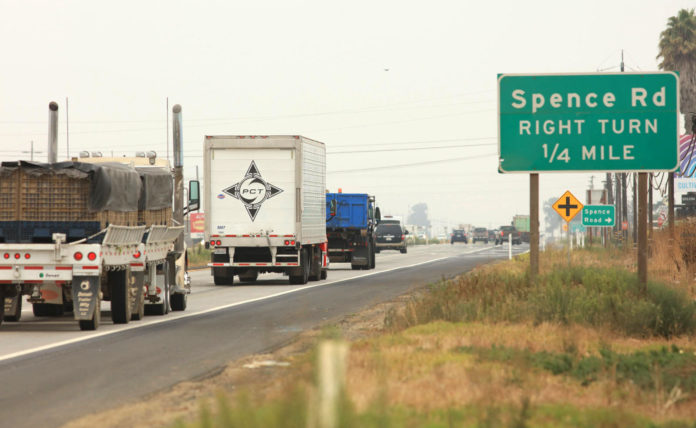
SALINAS — Transportation Agency for Monterey County (TAMC) Board of Directors received a comprehensive update on the US 101 South of Salinas project during its recent meeting.
The project, which is still in the planning stages, is aimed at addressing serious safety concerns along the corridor between the southern Salinas city limits and Chualar. The update also highlighted key feedback from the project’s ongoing community engagement efforts.
TAMC officials explained that the stretch of Highway 101 under consideration has been plagued by higher-than-average collision rates, particularly at uncontrolled intersections. Statistics show that this corridor sees one fatality per year and at least one severe collision every month.
“This corridor experiences collision rates above the state average with concentrations at uncontrolled intersections,” officials said.
In addition, the presence of uncontrolled railroad crossings, which serve as the sole access points for several nearby properties, has emerged as another significant safety concern. Many of these properties are located on some of the most valuable agricultural land in the world.
The project will also address outdated infrastructure, including much-needed upgrades to the Abbot Street and Main Street interchanges. The environmental review process is expected to explore alternatives for reconstructing both interchanges and potentially constructing frontage roads to maintain property access from Highway 101.
Community engagement has been a key part of the planning process, with input gathered from various local stakeholders, including the Traffic Safety Alliance, the Monterey County Farm Bureau, the Chualar and East Salinas communities, property and business owners, and the Ag Land Trust.
This feedback has been critical in shaping the development of “preliminary alternatives for the (project’s) environmental process,” said TAMC officials.
Key concerns raised by stakeholders include the need for long-term planning to prevent reactionary fixes after major incidents, the importance of minimizing the impact on agricultural land, and the necessity of providing alternative access to Highway 101 during construction. The Chualar community also voiced concerns about the negative impact of truck traffic on their quality of life, while others called for solutions to traffic congestion at the Airport Boulevard interchange.
The next phase of community engagement is set for this fall, as the project team works toward identifying feasible alternatives to be evaluated in the environmental review process, which is scheduled to begin early next year.
“Identifying feasible alternatives that meet the project purpose and need are an important part of the environmental evaluation,” officials said.
The project timeline includes the following key milestones:
- Identifying feasible options by the end of 2024;
- Beginning environmental work in early 2025;
- Completing environmental work by the end of 2026; and
- Finalizing the project design by the end of 2027.
Visit tamcmonterey.org/us-101-south-of-salinas-safety-improvement-project for more information about the US 101 South of Salinas project.














